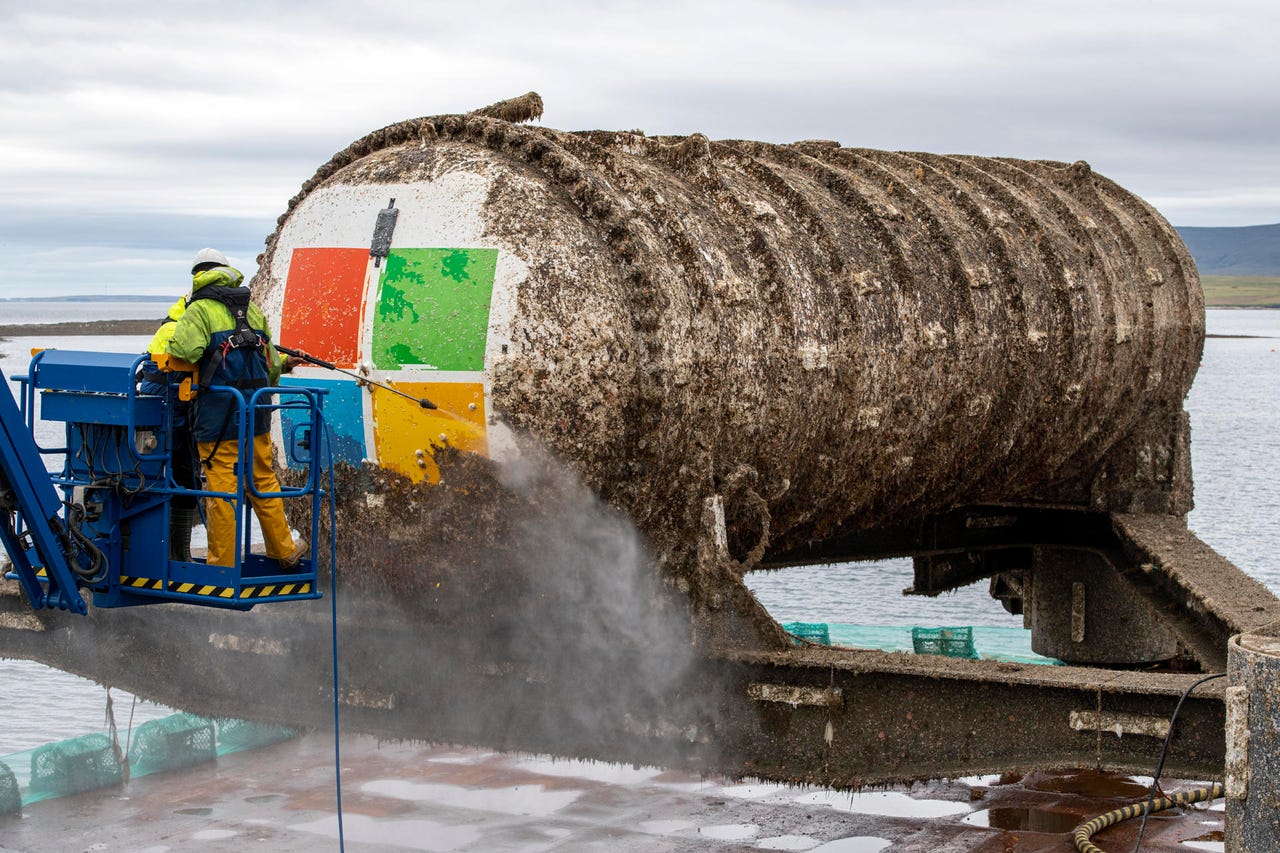Clouds in the ocean: Microsoft touts viability of underwater data centres


In 2014, Microsoft was convinced a sealed container on the ocean floor could provide ways to improve the overall reliability of data centres so, in 2015, it tested its first underwater data centre.
After working on its design and proving its viability, the company in 2018 deployed a pod full of servers off the coast of Scotland's Orkney Islands.
The Northern Isles underwater data centre was manufactured by Naval Group and its subsidiary Naval Energies. Orkney Island-based Green Marine was also involved, supporting Naval Group and Microsoft on the deployment, maintenance, monitoring, and retrieval of the data centre, which was operated by Microsoft.
The data centre was deployed at the European Marine Energy Centre, which is a test site for tidal turbines and wave energy converters.
After a few years of testing, the company has stood by its call that underwater data centres are feasible, as well as logistically, environmentally, and economically practical.
See also: Microsoft CEO Nadella: Underwater data centers are the future
In a blog post, the company detailed the retrieval of the underwater data centre, which was deployed 117 feet deep to the seafloor. The pod contained 864 servers along with related cooling system infrastructure.
"The consistently cool subsurface seas also allow for energy-efficient data centre designs. For example, they can leverage heat-exchange plumbing such as that found on submarines," the blog post said.
After its retrieval, the container was cleaned and sent off for health checks. Microsoft said there were a handful of failed servers and related cables, but Ben Cutler, a project manager in Microsoft's Special Projects research group who is currently leading the underwater data centre initiative known as Project Natick, claimed the servers in the underwater data centre were eight times more reliable than those on land.
"The team hypothesises that the atmosphere of nitrogen, which is less corrosive than oxygen, and the absence of people to bump and jostle components, are the primary reasons for the difference. If the analysis proves this correct, the team may be able to translate the findings to land data centres," the blog continued.
Cutler said the team would now think of scenarios to use underwater data centres, such as co-locating an underwater data centre with an offshore windfarm. Other sustainability-related benefits could include eliminating the need to use replacement parts, he said, noting that the high reliability of the servers meant that the few that do fail early could simply be taken offline.
In addition, he said Project Natick showed that data centres could be operated and kept cool without tapping into freshwater resources.
See also: The Internet of Wild Things: Technology and the battle against biodiversity loss and climate change (TechRepublic cover story) | Download the free PDF version (TechRepublic)
"Now Microsoft is going down the path of finding ways to do this for land data centres," he said.
With a growing need for edge computing, Microsoft said there's also a growing need to have smaller data centres located closer to customers instead of large warehouse data centres.
"We are populating the globe with edge devices, large and small," said William Chappell, vice president of mission systems for Azure. "To learn how to make data centres reliable enough not to need human touch is a dream of ours."
The Azure team has jumped on board the project, touting it as having the potential to allow Azure to serve customers that need to deploy and operate tactical and critical data centres anywhere in the world.
The findings are also informing Microsoft's data centre sustainability strategy.
Microsoft in January announced its plan to be carbon negative by 2030. The plan will see Microsoft take responsibility for its carbon footprint by being a voice for lowing emissions, being "grounded in science and math", investing in carbon reduction and removal technology, and providing transparency.
RELATED COVERAGE
- Microsoft releases tool to calculate cloud-based carbon emissions
- Microsoft's ambitious plan to remove its entire carbon footprint
- Microsoft ramps up biodiversity efforts through new 'Planetary Computer' initiative
- These 10 technologies are most likely to help save planet Earth
- Why the private sector will play an increasingly bigger role in climate change and sustainability